
We have all heard of ancient Chinese culture, and it would be absurd in a single article to span thousands of years, yet yes I want to tell you about Chinese sculpture, its tradition and its importance in Asian art, And in the rest of the world.
From the origins of the history of China, and of all civilizations, objects in bronze, jade and bone have been created, which were part of shamanistic rituals. In these forms of bronze and jade it is shown for the first time one of the essential principles of Chinese art: its synthesis between the artistic creative spirit and the social and hierarchical function to which they were destined from their conception.
Characteristics of the sculpture
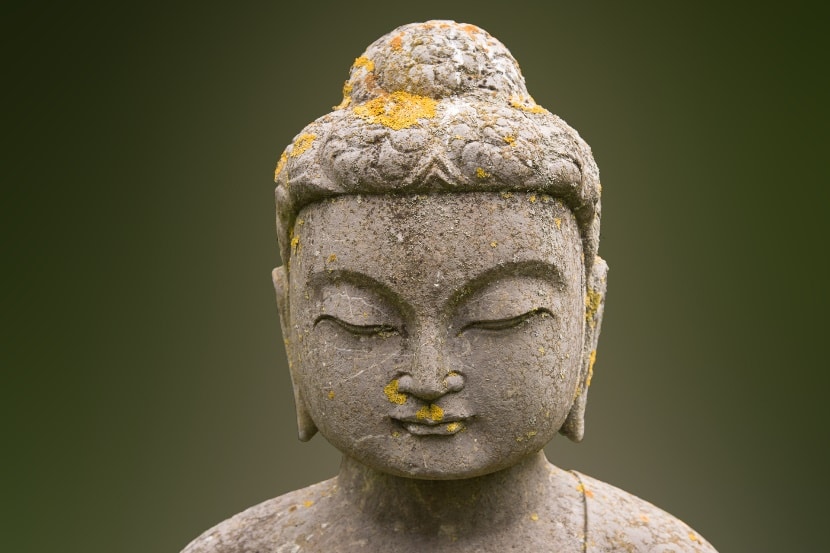
One of the differences between Chinese and Western sculpture is that the Chinese sculptor pays a lot of attention to the landscape, which is present. In the human figure he is very careful in the outline of the silhouette, the outline is refined, and the eyes, from which the inner spirit radiates, are of special interest. Another of its characteristics is the emphasis on the clothing of the characters.
If something characterizes Chinese sculpture, it is the great technical knowledge of the materials in which it is made, rather than artists they are considered artisans, for this reason they are not mentioned in most of the books and historical documents that talk about Chinese art. It is an anonymous art, creation of collective workshops.
Ivory, wood and bamboo carvings
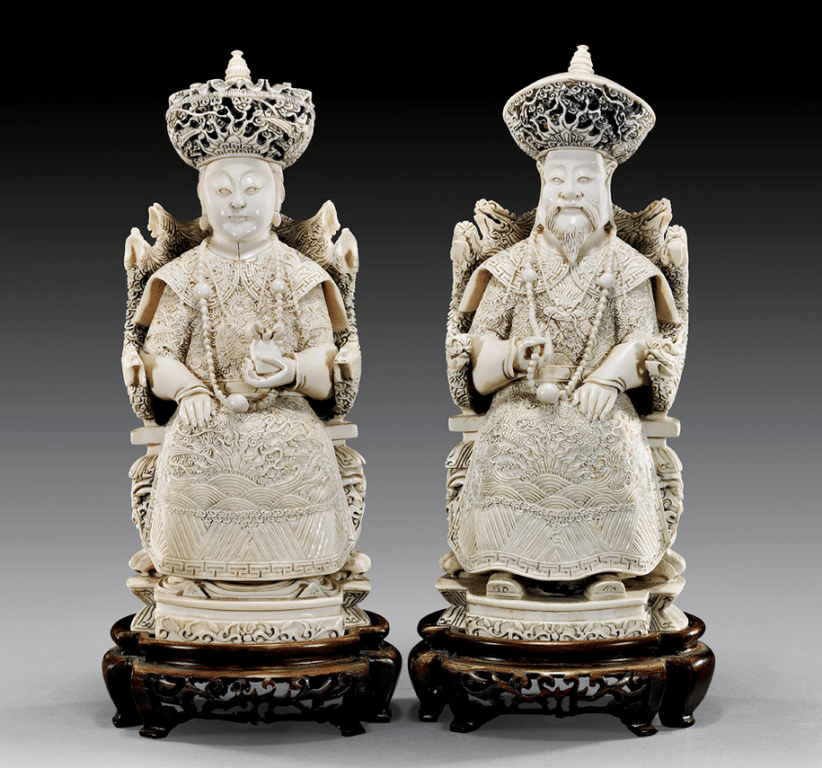
Ivory carving is one of the oldest arts, samples have been found in tombs dating back to the Dynasty Shang (XNUMXth-XNUMXth centuries ac). These pieces have such an exceptional design and execution that they speak of a previous development that could take us to prehistoric times. In the Tang period (618-907 AD) and in the Song Dynasty (960-1279 AD) the carving of tusks and horns became more sophisticated in technical and aesthetic terms. It is in the 1644th century, Qing dynasty (1911-XNUMX AD), that Western industry was gradually introduced into China.
Wood carving has a long history in China. Its motives are based on mythology and popular beliefs about good luck, prosperity, harmony, longevity ...
More than 2000 years ago, the Chinese already carved in bambooBut it is from the Ming dynasty (1368-1644 AD) that the carvings of this material became a professional industrial art and more and more artists were dedicated to it. It is curious, because in this art important schools and carvers are recognized
The theme of Chinese sculptures
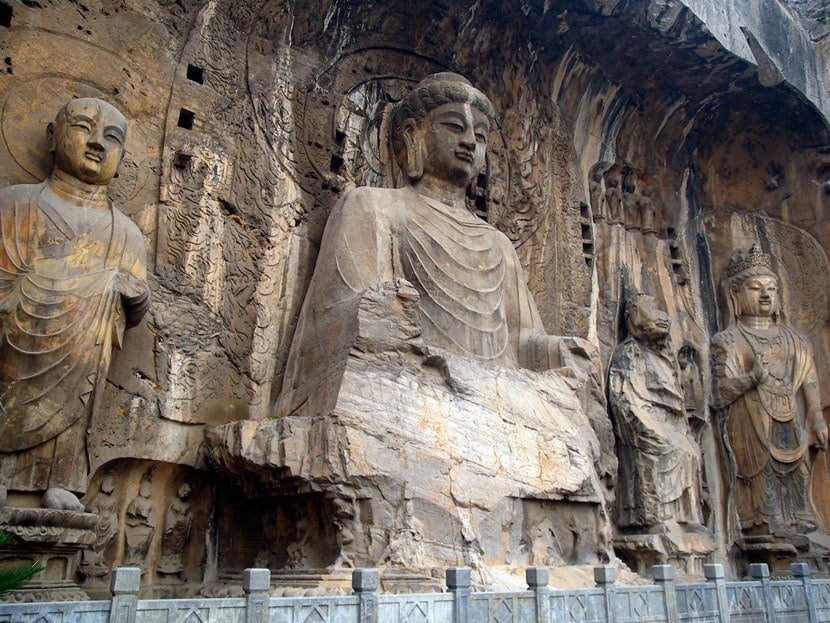
Most of the Chinese sculptures are related to religion and heroes, both real and fictitious. Through stone sculpture and wooden architecture, society manifested itself as a deeply hierarchical community.
The stone sculpture began as a majestic and representative decoration of the funeral paths of the imperial tombs in the Han dynasty, Pliers and especially the Ming tombs. In them we find great real and mythological animals, and the representation of the literate, military, foreign social classes, etc.
Sculpture was closely linked to the spread of Buddhism. The Yungang, Longmen and Dunhuang Grottoes showcase the stone, brick and stucco work that shaped the Buddhist pantheon. In these pieces, the foreign influence and its transformation or adaptation to Chinese taste and aesthetics can be appreciated, as one of the greatest contributions of the exchanges produced on the Silk Road. Throughout the country you can see numerous Buddha sculptures, with influences from Tibet and India, they are Buddhas with fine features, distant and mysterious glances. From the XNUMXth and XNUMXth centuries, sculptures of Buddhas began to appear with greater expression, joy and reality, with more curved lines and soft shapes.
Porcelain
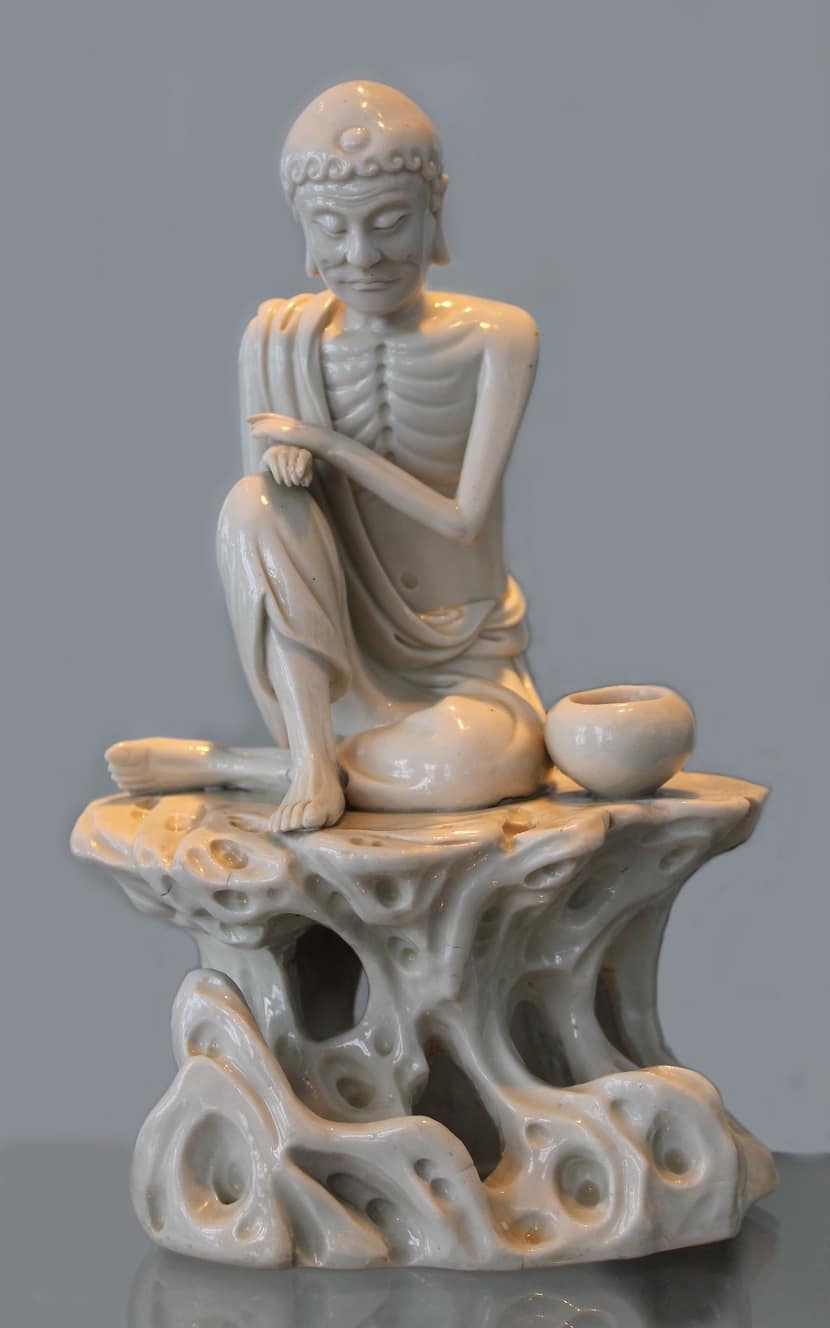
I want to talk about porcelain, as part of Chinese sculpture, because of that idea that I told you at the beginning about the control that "artisan sculptors" have over materials. Porcelain is a ceramic material produced in a traditional or industrial way, traditionally white, compact, fragile, hard, translucent, waterproof, resonant, low elasticity and highly resistant to chemical attack and thermal shock, this is at least the most scientific definition. .
It originated in China, under the name tzu, probably at the time of the Han dynasty (206 BC to 220 AD) although the first written references date from the time of the dynasty Pliers (618 AD to 907 AD). and it was the traveler Marco Polo who introduced it to Europe, where for centuries they tried to copy it.
The Terracotta Soldiers of Xi'an
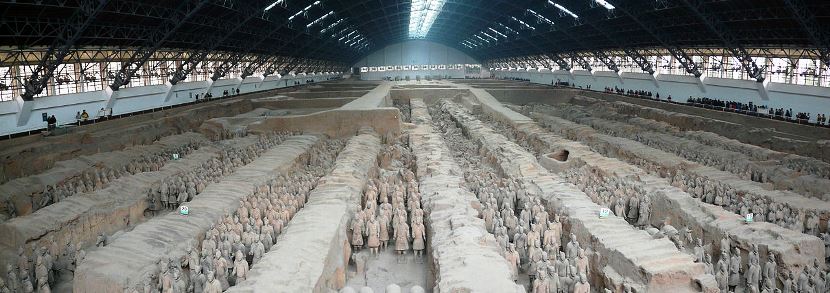
Without a doubt, when thinking of Chinese sculptures, the soldiers of Xian come to mind. These soldiers are a group of more than 8000 figures of terracotta warriors and horses, which are part of the celestial army of the mausoleum of qin Shi Huang, year 210-209 ac, China's first self-proclaimed emperor.
The figures They are life-size: they measure 1,80 meters in height and are equipped with armor made also with terracotta and at the time they had real weapons. Their uniqueness is that each of them has different features and characteristics. There are also women. The figures are brightly colored and bright, but after 5 hours of air exposure the paint is lost due to oxidation. Today they are still looking for a technique that allows to maintain these colors, but it is known that it has not been achieved.
SUPER FIND MY JOB FOR TOMORROW AAAYYYYYYYYYYYYYYYYYYYYYY
'